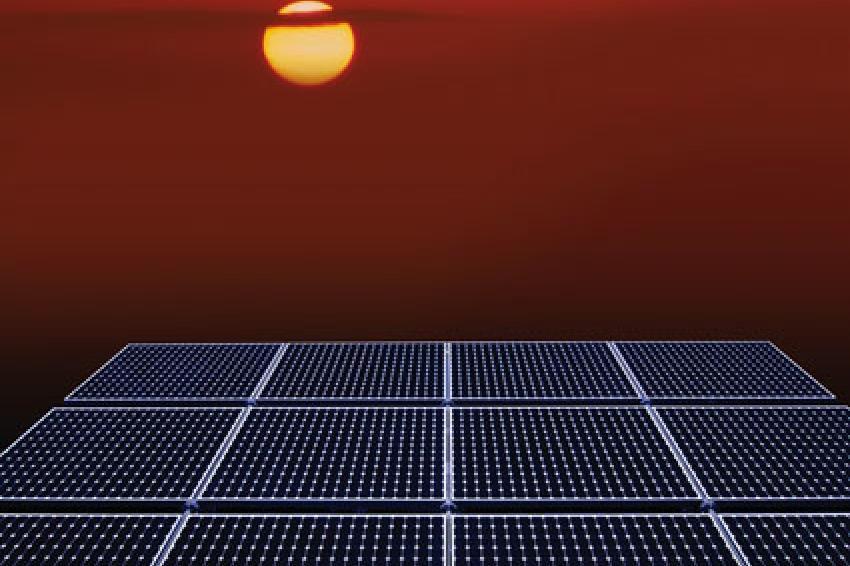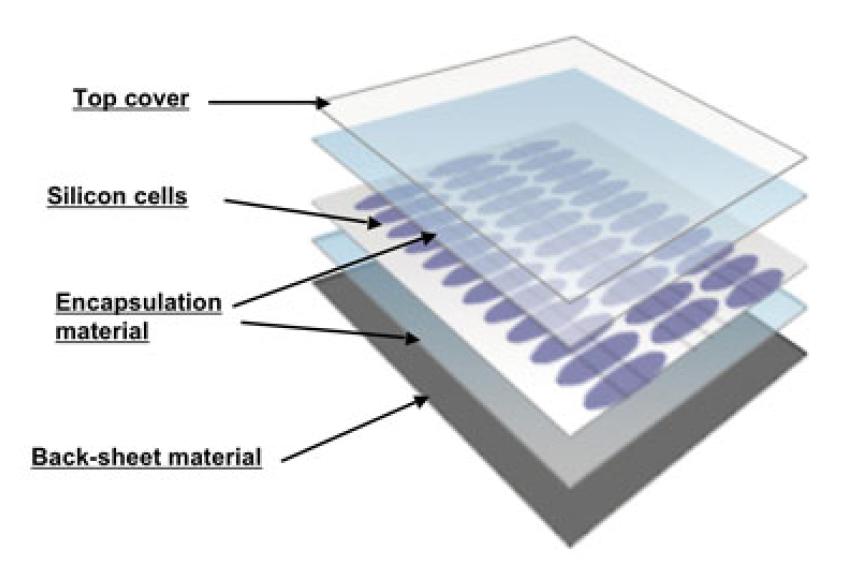Photovoltaic Modules
Balancing the Cost/Performance Ratio
Solar radiation is an unlimited source of renewable energy. The direct conversion of solar radiation into electricity by photovoltaic modules is acknowledged as the most interesting way to use solar energy. Bringing costs down while maintaining durable performances has always been the focus of the photovoltaic (PV) industry, but now that this energy is being promoted in larger parts of the world, the cost/performance ratio of photovoltaic modules has become more important than ever.
In order to take up this challenge, the industry as a whole is looking at ways to reduce the cost of PV modules. A short analysis of the components of PV modules based on crystalline or multi-crystalline silicon cells shows that the cost of the different components can be classified (in order of importance) as follows:
1. Silicon cells;
2. Frame, junction box and connections;
3. Materials to protect, encapsulate, insulate the cells (glass & polymers).
A major increase in silicon cell production capacity has enabled a significant decrease in the cells' price over the last 12 months. The automation of the cells' connection as well as the module assembly on larger scales have also contributed to reducing the price of PV modules. The industry is now turning to the different material suppliers, expecting a significant decrease in the cost of materials to also contribute to lowering the cost of modules. It is important to bring to the attention of end-users that these materials represent just 10 % of the total cost of PV modules, but are key in ensuring the modules durability. Therefore, any cost reduction in this area must be evaluated carefully to avoid compromising the modules' long-term performance.
Mono- and polycrystalline cell PV modules are made up of different layers of material (fig.1). The top cover is normally made of special glass which is impact-resistant and often textured to offer superior output. The encapsulation material is made of cross-linked Ethylene-vinyl acetate (EVA) and the back-sheet material is made of bi-oriented Polyethylene terephthalate (PET), in most cases protected on both sides against ageing.
It is currently believed that glass and cross-linked EVA both represent a good cost/performance ratio for such rigid PV modules. For years, the back-sheets available to the industry have been based on Tedlar Polyvinyl fluoride (PVF) film protection on both sides of the PET core film, known as TPTTM, but regular shortages of PVF and a search for a better cost/performance ratio have prompted the industry to look at different protections for the bi-oriented PET film at the core of the back-sheet: Over the last two years, back-sheet suppliers have put a lot of effort into introducing different back-sheet structures to the market, each providing different types of protection for the PET film.
Spoiled For Choice?
PV module manufacturers now have a choice between many different back-sheets structures available at different prices, and it is becoming increasingly difficult for PV module manufacturers to appreciate the long-term performances of these back-sheets. Even if properties measured at the outset are often similar and close to the PET core film alone, the durability of the back-sheet will vary a great deal between the different structures as it is clearly dependent on the level of protection on both sides of the PET core.
When speaking about durability of polymeric materials - often referred to as weatherability - fluoropolymers have established themselves as the only group of polymers able to provide good performances after more than 30 years of exposure to outdoor conditions.
This excellent stability when exposed to harsh thermal, chemical, and ultraviolet environments is due to the strength of the C - F bond, one of the most stable bonds known in organic chemistry. Also important to ensure durable protection of the PET is the structure and thickness of the protective layer: A continuous layer with no pinholes or micro-porosity, and a minimum thickness of 20 microns will ensure long-term protection. This is the reason why the industry originally settled for a pinhole-free 38 micron PVF fluoropolymer protective film, and any move toward a thinner film or away from fluoropolymer should be properly evaluated through tests representing the ageing in the field of the PV modules, typically designed to last more than 25 years.
Optimum Collaboration
Based on over 40 years' experience in the weathering protection of metallic structures in architectural coatings, Arkema has been working hard with the company Krempel, based in Vaihingen, Germany, to develop a new fluoropolymer protective film to provide cost benefits verses TPT, albeit without compromising durability. This protective film is based on Kynar PVDF, a fluoropolymer known in other industries for its outstanding properties which include UV stability, compatibility with mineral fillers to provide permanent UV opacity, barrier properties and recyclability to name but a few.
The UV resistance of PVDF is so good that no deterioration can be detected under the very stringent QUV B 313 tests. Under such stringent tests, Tedlar PVF shows surface deterioration after 5,000 hours, while Kynar PVDF remains totally stable. The absence of pinholes, along with its outstanding UV resistance, means that with Kynar PVDF film it is safe to reduce the thickness of the protective film below the traditional 38 microns. Our film has been designed to offer very high UV and moisture protection to PET, and Krempel's strong lamination expertise has produced a durable bonding to PET through a specifically formulated adhesive. This back-sheet, known as KPK, is gaining wider acceptance as a truly safe long-term alternative to TPT.
This trend to lower costs is prompting some suppliers to remove the protective layer on the side of the back-sheet facing the top of the module. In such cases, the one-sided PVDF or PVF Film back-sheet protects the back-sheet on one side only, the other side relying on the protection provided only by the cross-linked EVA and glass layers. This is a matter of risk management, whereby the back-sheet could be regarded as a safety component. If the back-sheet fails, there is a risk of complete failure of the module or at least a significant reduction in the efficiency of the module. The use of two layers of PVDF film increases the raw material cost of the back-sheet by 20 %, but the back-sheet only contributes a small percentage of the modules total cost. The savings made by using only one layer of PVDF film instead of two represent just 1 % of the total raw material costs but leads to reduced protection. Is it really a good idea to reduce the protection when the savings represent only a small fraction of the total cost of a module that is supposed to perform for more than 25 years?






